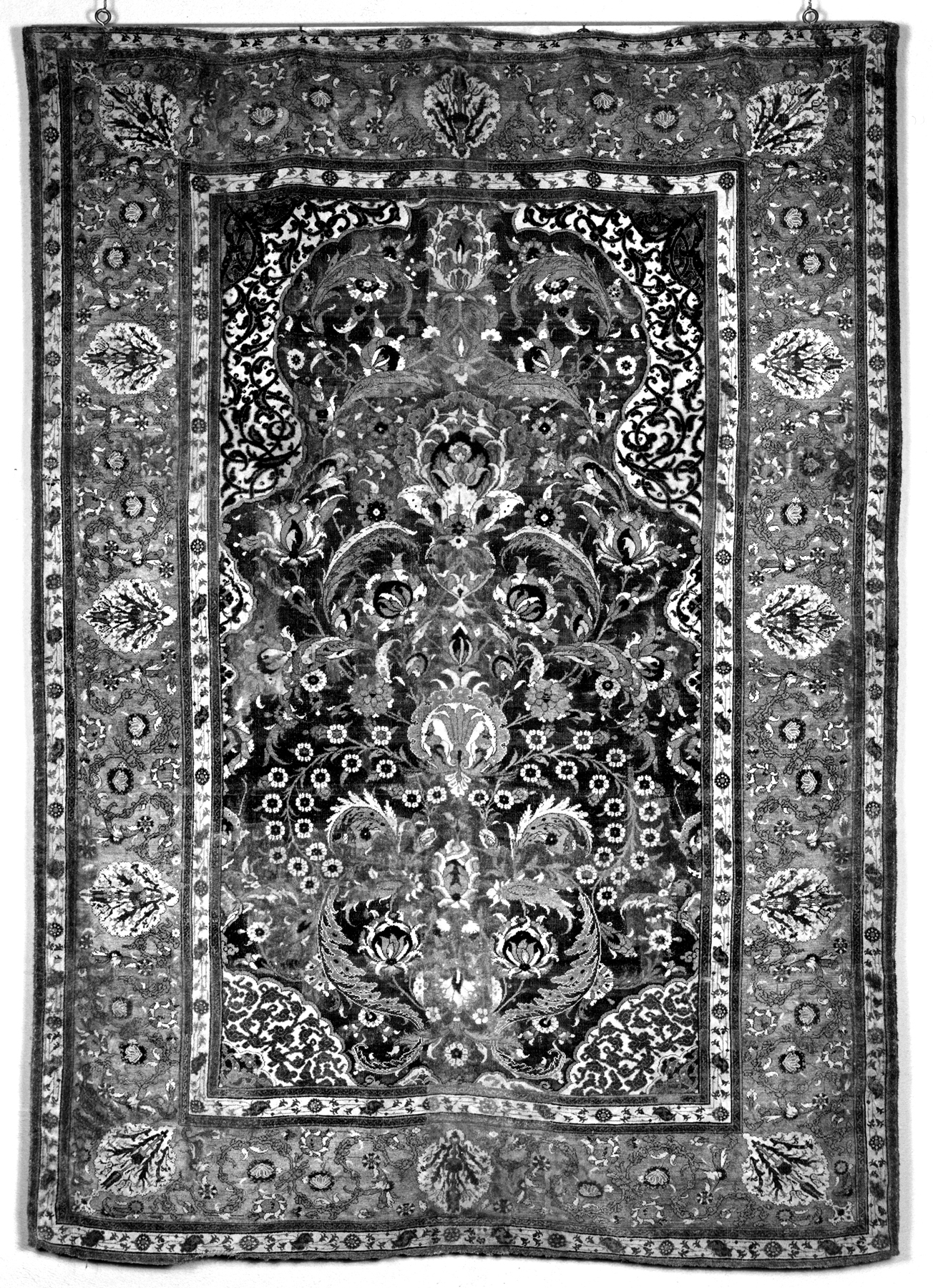Prayer Rug with Floral and Ornamental Designs
During their daily prayers, Muslims traditionally roll out small rugs to cover the ground, creating a ritually clean space for their devotions. Likewise, the floors of mosques, which are places of communal worship, are covered with carpets on which Muslims perform their sequence of prayers.
Islamic prayer rugs vary enormously in decoration, but they frequently feature a framed panel with twin columns supporting an arch that represents the mihrab, or niche in the wall of a mosque, indicating the direction of prayer toward Mecca. The design of this 16th-century Ottoman rug depicts a beautiful floral pattern with blossoms and leaves; the main border displays medallions with tulips and hyacinths. While the central arch has no columns to reflect the prayer niche, the arrangement of the blossom pattern is a kind of floral translation of the architecture.
Provenance
Provenance (from the French provenir, 'to come from/forth') is the chronology of the ownership, custody, or location of a historical object. Learn more about provenance at the Walters.
Henry Walters, Baltimore,1927, by purchase [date and mode of acquisition unknown]; Walters Art Museum, 1931, by bequest.
Exhibitions
| 1991 | Beyond the Pyramids: Geometry and Design in the Carpets of Egypt, 1450-1750. The Textile Museum, Washington. |
| 1983 | The Eastern Carpet in the Western World. Hayward Gallery, London. |
| 1974-1975 | Prayer Rugs. The Textile Museum, Washington; The Montclair Art Museum, Montclair. |
Conservation
| Date | Description | Narrative |
|---|---|---|
| 3/29/1983 | Examination | examined for loan |
| 10/7/2014 | Examination | examined for condition |
Geographies
Turkey, Anatolia (Place of Origin)
Measurements
H: 69 1/2 x W: 50 1/8 in. (176.5 x 127.3 cm)
Credit Line
Acquired by Henry Walters, 1927
Location in Museum
Not on view
Accession Number
In libraries, galleries, museums, and archives, an accession number is a unique identifier assigned to each object in the collection.
In libraries, galleries, museums, and archives, an accession number is a unique identifier assigned to each object in the collection.
81.4




